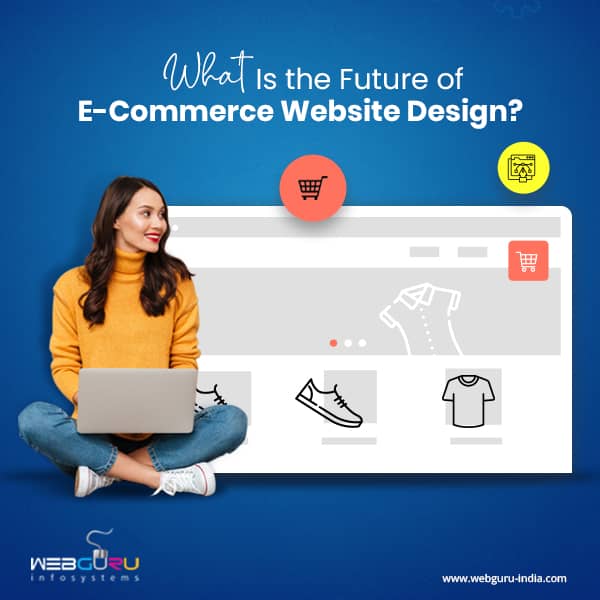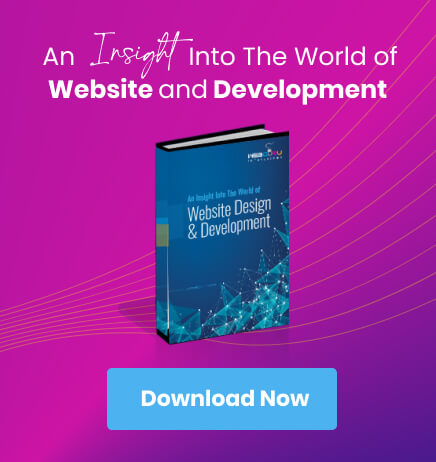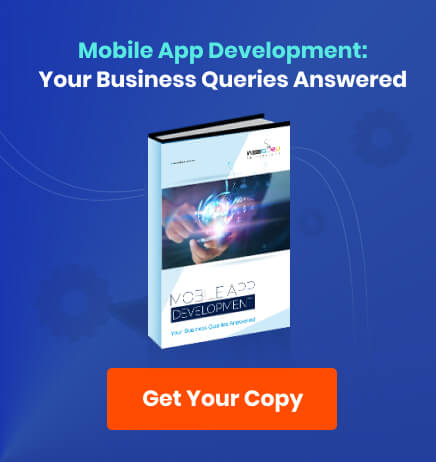Home Blog Ecommerce Website Development What Is the Future of E-Commerce Website Design?
What Is the Future of E-Commerce Website Design?
- 09 Oct / 2023
- 3,045 views
- 9 Min Read

The global e-commerce industry has witnessed tremendous growth and flourishing over the last decade and a half. Even now, as more and more brands attempt to reach customers online, the trend continues. As a result, there is a high demand for e-commerce website design services from SMEs as well as established business organisations. Businesses benefit greatly from having an easy-to-use e-commerce site since it enables them to promote their goods and services appropriately. They are also able to provide consumers with a smooth buying experience right at any time, from any place in the world.
To guarantee a quick and safe online transaction process, e-commerce design includes developing aesthetically pleasing layouts, improving navigation, and integrating secure payment methods. The simplicity it provides and our growing dependence on technology make the prospects of e-commerce web design quite bright. The need for creative and user-centered designs will only increase as long as companies continue to place a high priority on their online presence.
The significance of optimal e-commerce website design for online business
Any business owner who intends to list and sell products and/or services online needs an eye-catching and easy-to-use e-commerce store. Moreover, such stores should be equally usable on both desktop and mobile platforms, across any type and size of device. While some businesses rely on third-party e-commerce platforms, others prefer to have their own branded stores. If you belong to the latter category, focusing on the quality and responsiveness of your e-commerce portal is of prime importance.
It only takes a few seconds for any prospective customer to form an overall impression of your brand. This is why you need a site that loads fast, has clear navigation, and offers great UX (user experience) overall. It will function effectively as the differentiator between your site and the sea of competing e-commerce portals going neck-to-neck. Also, according to research, as much as 70% of small businesses do not have appropriate call-to-actions on their website’s homepages. It goes to show how important the presentation and positioning of CTAs need to be for e-commerce websites.
If you are looking forward to hiring a ecommerce website design company, it is important to address your requirements aptly. The main priority should be creating a website that offers a great experience on all devices, is clutter-free, and is future-proof.
Here are some reasons to prioritise e-commerce website design ingenuity:
- A mobile-responsive layout enables accessibility across devices, hence potentially increasing one’s client base.
- Customer confidence and contentment are increased through intuitive navigation as well as a straightforward product display.
- Optimised load times boost SEO results and decrease bounce rates. 60% of shoppers value usability in online store design.
- Effective design may communicate brand identity while also encouraging consumer loyalty and familiarity.
- Fast and hassle-free checkout processes reduce cart abandonment and increase
- Optimal e-commerce website design improves the user experience, resulting in more conversions and sales.
- Security aspects create trust, alleviating fears about security breaches.
- Data-driven decision-making for corporate success is enabled through integration with analytics.
- A user-friendly design caters to a wide range of client preferences and demands. Constantly updating design to make it relevant in the ever-changing Internet industry.
Current Trends To Follow for E-Commerce Website Design
– Mobile responsiveness and optimisation
As a rule of thumb, every business website should be mobile responsive and optimised for different screen sizes. With the increased usage of smartphones and tablets for online buying, e-commerce websites must deliver a consistent browsing and purchase experience across all platforms. This trend guarantees that prospective consumers can quickly access and browse the website, resulting in increased interaction and, eventually, increased revenue. Furthermore, optimising the website for mobile devices boosts its search engine ranks since search engines emphasise mobile-friendly websites in the SERPs. To achieve this, designers can consult with professionals providing e-commerce website development services to optimise a website effectively.
– Minimalist and clean design
Less is definitely more when it comes to delivering a hassle-free and favourable user experience. You simply cannot afford to have a shopping website or e-store with a lot of clutter. It will be a major minus point for users who simply want to browse your store, explore products, and order instantly. Everything should be in the right place in terms of hierarchy, so the most important call-to-actions (CTAs) are up top and prominent. Designers should also be mindful that having extra design or functionality elements can be detrimental. It is best to opt for a clean and minimalist design approach to ensure peak user-friendliness and retention.
– Personalisation and customisability
To accommodate individual interests and improve the user experience as a whole, e-commerce websites should be customisable. Personalised suggestions, adjustable product choices, and the opportunity to mark down favourite goods for future reference are examples of such capabilities. Allowing consumers to tailor their browsing and buying experiences fosters a feeling of ownership and enhances the possibility of return visits and purchases. Incorporating personalisation might help to increase client satisfaction and retention.
Artificial Intelligence (AI) and Machine Learning (ML) in E-Commerce Website Design
– Personal product recommendation engines
E-commerce businesses may also integrate recommendation engines on their websites to provide appropriate and exact advice to potential shoppers. This may improve the customer’s purchasing experience greatly by saving customers time and effort in looking for items that fit their unique demands. These recommendation engines use consumer data, like browsing history and purchasing trends, to provide customised product choices that are more likely to be appealing to the specific buyer. Not only does this boost the likelihood of a successful transaction, but it also develops client loyalty and happiness.
– Optimising user experience and decision-making using advanced analytics
Designers may also include analytical tools on their websites to monitor user activity and collect data on how consumers engage with the site. This information gets used to make educated design choices and enhance the overall user experience, resulting in greater customer happiness and sales. Designers may also use sophisticated analytics to gain knowledge of customer tastes and behaviours, enabling them to constantly enhance their line of products and remain ahead of their peers.
– Chatbots enhance customer support and service
Integrating customer service chatbots to provide support to potential and existing customers should be another e-commerce website design priority. These boots can provide instant and personalised assistance to customers, answering their queries and guiding them through the purchasing process. By utilising machine learning algorithms, these chatbots can continuously improve their responses and recommendations based on customer interactions, leading to a more efficient and satisfying customer experience. Additionally, AI chatbots can also collect valuable data on customer preferences and behaviors, allowing businesses to further personalise their marketing strategies and product offerings.
Virtual and Augmented Reality (VR/AR) Integration in E-Commerce Website Design
– Utilising virtual stores to increase consumer engagement
Delivering virtual experiences to prospective consumers may help companies entice them and keep them on course (to conversion). This is something that website designers should be aware of in order to ensure that VR/AR integration is included in a website. Brands can deliver a more immersive and engaging shopping experience by enabling consumers to digitally explore and test out things before making a purchase. This not only enhances consumer interaction but also builds trust and confidence in the company, resulting in increased conversion rates. Furthermore, the data gathered from these virtual shopping experiences may give important insights into client preferences and habits, enabling firms to customise their products and increase customer happiness.
– AR try-on features for fashion and cosmetics
E-commerce companies that sell cosmetics, apparel, or footwear can take acute advantage of augmented reality (AR) try-on features. These may be placed on product listing pages to enable shoppers to virtually test out clothing or cosmetics before purchasing. Customers can preview how the goods will appear on them in real-time, which not only improves the online buying experience but also mitigates the possibility of returns. Furthermore, AR try-on capabilities may help bridge the disparity between online and physical shopping by offering consumers a more engaging and customised experience.
– Virtual showrooms for decor and furniture businesses
Teams offering web design and e-commerce website development services can collaborate to integrate convenient virtual showroom features for decor and furniture businesses. This functionality lets prospective buyers place virtual versions of products within their own living spaces. They can get a clear idea of how a piece of furniture or decorative item would appear, estimate its apparent size, and determine how it appears against their room’s backdrop. More and more online businesses in physical product domains are now leaning towards virtual showroom features on their e-stores.
Voice-Based Search and Design Optimisation
– Voice search integration
Voice search integration is another high-value design feature that should not be overlooked as an afterthought. Customers using mobile devices (and even desktop computers) increasingly choose the assured simplicity of voice search when looking for and purchasing things. This is why an increasing number of business owners want voice search integration on their e-commerce platforms. This feature enables them to provide a more smooth and user-friendly shopping experience by enabling consumers to use their voice. Furthermore, with the emergence of virtual assistants such as Siri and Alexa, voice shopping is becoming a more popular e-commerce trend.
– Conversational chatbots for enhanced transactions
A conversational chatbot is another feature that can now be included in any e-commerce platform. It is basically a virtual service and support agent that can converse with consumers and provide real-time help and support during their shopping journey. This functionality not only makes transactions easier for clients, but it also saves companies time and money by streamlining customer support operations. Furthermore, conversational chatbots may tailor the shopping experience by making product suggestions based on prior purchases and client preferences. As a website design company focused on implementing the latest enhancements, our team can assist you for hassle-free website chatbot integration.
– Enhanced Payment and Security Features
Integrating biometric identification, multi-factor authentication, and blockchain-based cryptocurrency payments for increased security are among the next payment and safety-related web design elements ideal for e-commerce enterprises. Tokenisation, 3D Secure 2.0, sophisticated payment processing systems, PCI DSS compliance, real-time fraud detection, data encryption, and frequent security inspections are all important for protecting consumer payment data. Behavioral biometrics, dynamic CVV codes, stricter password regulations, and user consent management all contribute to increased security and compliance. It is critical to stay current on these emerging technologies and best practices in order to maintain a safe and trustworthy e-commerce platform.
Conclusion
The above-mentioned information sheds some light on the future prospects and requirements of website design in the domain of e-commerce. Following the latest trends is of the utmost importance in terms of enhancing user experiences. If you do not step up, your competing businesses probably will. Design has a direct impact on first impressions, usability, and the ability of an e-commerce website to draw in conversions.
Interested to know more about how optimal website design can help your brand shine? Consult with our experts today.

Saurav Majumdar
Saurav Majumdar is a curious mind with a never-ending quest for knowledge.
7 comments
Leave a Reply

-
1000+
Happy
Clients -
25+
Countries
Served -
19+
Years of
Trust








Thank you, Saurav! The content is really good and easy to understand.
Insightful breakdown of e-commerce design essentials Saurav! Prioritizing user experience across devices and staying ahead with trends is key.
Thanks for the informative blog post! I would like to add a few supplementary points that may benefit your readers:
* Multi-language Support
* Gamification Elements for Engagement
* Blockchain for Supply Chain Transparency
* Visual Search Functionality
* Dynamic Pricing Strategies
* Predictive Analytics for Personalized Recommendations
Informative Post.
This insightful article delves into the evolving landscape of ecommerce website design, offering valuable insights and predictions for the future. A must-read for anyone in the digital marketplace!
May I simply just say what a relief to find somebody that truly knows what they are discussing over the internet.
You actually know how to bring a problem to light and
make it important. More and more people ought to read this and
understand this side of the story.
Fascinating read! This article offers great insights into the future of eCommerce website design, focusing on user experience, AI, and personalization.